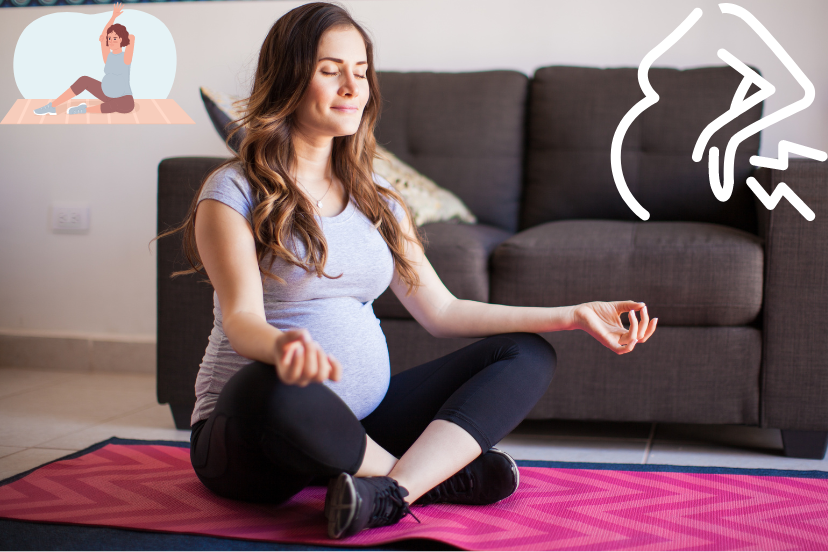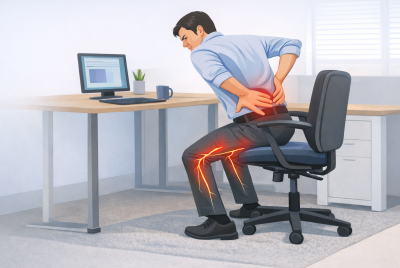Sciatica Pain Relief During Pregnancy
Discover safe and effective methods for sciatica pain relief during pregnancy. Find tips, exercises, and advice to ease discomfort. Pregnancy is an exciting and transformative time, but it can also come with its fair share of discomforts. One common issue many pregnant women face is sciatica pain. As someone who has navigated these challenges and as an advisor on sciatica, I’d like to share some insights and tips on managing this pain. Let’s dive into the world of sciatica during pregnancy and explore practical ways to find relief.
What is Sciatica?
Sciatica is a condition characterized by pain that radiates along the sciatic nerve, which runs from the lower back down through the hips and buttocks and into each leg. This pain can be sharp, burning, or tingling and may also include numbness. The symptoms can vary in intensity and are often exacerbated by specific movements or positions.
Causes of Sciatica in Pregnancy
During pregnancy, your body undergoes numerous changes that can contribute to sciatica. The growing uterus can press on the sciatic nerve, causing discomfort. Additionally, the hormone relaxin, which helps relax the ligaments in your pelvis in preparation for childbirth, can sometimes lead to misalignment and additional pressure on the nerve.
Symptoms to Watch Out For
If you’re experiencing sciatica, you might notice pain that starts in your lower back and travels down one leg. You might also feel a dull ache, sharp pain, or burning sensation. In some cases, there can be numbness or difficulty moving the leg.
Why Sciatica Pain is Common in Pregnancy
Hormonal Changes
One of the key reasons sciatica is common during pregnancy is due to hormonal changes. The hormone relaxin helps your pelvis expand during childbirth, but it can also make your joints and ligaments more susceptible to injury or strain.
Weight Gain and Posture Changes
As your baby grows, your center of gravity shifts, which can alter your posture. This shift can put extra strain on your lower back and, consequently, the sciatic nerve. The additional weight can also contribute to increased pressure on the nerve.
Pressure from the Growing Uterus
The growing uterus can press against the sciatic nerve, especially in the later stages of pregnancy. This pressure can cause pain and discomfort, making it essential to find ways to alleviate it.
Safe and Effective Sciatica Pain Relief Methods
7 Best Pregnancy-Safe Stretches for Quick Sciatica Pain Relief
Managing sciatica during pregnancy requires a gentle and cautious approach. Here are some effective methods to consider:
Gentle Exercises and Stretching
Regular, gentle exercise can help relieve sciatica pain by strengthening the muscles supporting your spine and improving your posture.
Prenatal Yoga
Prenatal yoga is an excellent way to stretch and strengthen your muscles without putting undue strain on your body. Poses like the child’s pose, cat-cow, and pigeon pose can specifically target areas that tend to get tight during pregnancy.
Swimming and Water Aerobics
The buoyancy of water takes the pressure off your joints, making swimming and water aerobics fantastic low-impact exercises. They help improve circulation and provide relief from sciatic pain.
Maintaining Good Posture
Proper posture can significantly alleviate sciatica pain by reducing the strain on your lower back and pelvis.
Tips for Sitting
When sitting, use a chair with good lumbar support, keep your feet flat on the floor, and avoid crossing your legs. A small cushion or rolled towel behind your lower back can provide additional support.
Tips for Standing and Walking
While standing, distribute your weight evenly on both feet and avoid locking your knees. When walking, take short, steady steps, and try not to overextend your stride.
Heat and Cold Therapy
Both heat and cold can be beneficial in managing sciatica pain, depending on your symptoms.
When to Use Heat
Heat therapy, such as warm baths or heating pads, can help relax tight muscles and alleviate discomfort. However, avoid overheating your body, as it can be harmful during pregnancy.
When to Use Cold
Cold packs can reduce inflammation and numb the pain. Use a cold pack wrapped in a cloth and apply it to the affected area for 15-20 minutes.
The Role of Sleep and Rest
Adequate rest is crucial for managing sciatica during pregnancy. It gives your body time to heal and reduces strain on your back.
Finding a Comfortable Sleeping Position
Sleeping on your side with a pillow between your legs can help keep your spine aligned and reduce pressure on the sciatic nerve. A body pillow can also provide additional support.
The Importance of Rest
Listening to your body and resting when needed is essential. Overexertion can worsen sciatica pain, so take breaks throughout the day to relax and relieve pressure on your back.
The Benefits of Prenatal Massage
A prenatal massage from a certified therapist can help relieve muscle tension and improve circulation. It’s a relaxing way to manage sciatica pain, but ensure the therapist is trained in prenatal care.
Wearing a Supportive Maternity Belt
A maternity belt can support your growing belly and alleviate pressure on your lower back and hips. It can be particularly helpful during activities that involve prolonged standing or walking.
The Importance of Staying Hydrated
Staying hydrated is vital for overall health and can help reduce inflammation, which can, in turn, alleviate sciatic pain. Aim to drink plenty of water throughout the day.
Consulting with a Healthcare Provider
Always consult with your healthcare provider before starting any new exercise or treatment for sciatica. They can provide personalized advice and ensure that your chosen methods are safe for you and your baby.
My Experience and Tips
Having experienced sciatica during pregnancy, I know how challenging it can be. Here’s what worked:
What Worked
Gentle stretching and regular prenatal yoga classes were lifesavers. We also found relief from using a heating pad and taking warm baths. A supportive maternity belt made a significant difference when walking or standing for extended periods.
What to Avoid
It was crucial to avoid high-impact exercises, heavy lifting, and prolonged periods of sitting or standing, as these activities tended to exacerbate my symptoms.
FAQs Related to Sciatica Pain Relief During Pregnancy
Can sciatica pain harm my baby?
No, sciatica pain does not harm your baby. However, managing your symptoms is essential to ensure your comfort and well-being.
Is it safe to exercise with sciatica during pregnancy?
Yes, gentle exercises like prenatal yoga and swimming are generally safe and can help relieve sciatica pain. Always consult your healthcare provider before starting any new exercise regimen.
How long does sciatica pain last during pregnancy?
The duration of sciatica pain can vary. Some women experience it intermittently, while others may have persistent discomfort. It often improves after childbirth.
Can a chiropractor help with pregnancy sciatica?
Yes, a chiropractor trained in prenatal care can help realign your spine and pelvis, potentially reducing sciatica pain. Be sure to choose a practitioner experienced in treating pregnant women.
Are there any medications I can take for sciatica during pregnancy?
Always consult your healthcare provider before taking any medication during pregnancy. They can recommend safe options if necessary.
Will sciatica go away after giving birth?
In many cases, sciatica symptoms improve or resolve after childbirth as the pressure on the sciatic nerve decreases. However, if symptoms persist, consult your healthcare provider for further evaluation.
Sciatica Pain Relief During Pregnancy – Conclusion
Managing sciatica during pregnancy can be challenging, but with the right approach, you can find relief. Remember to listen to your body, practice good posture, and consult your healthcare provider for personalized advice. By taking these steps, you can alleviate discomfort and enjoy this special time in your life.
Disclaimer
This article is for informational purposes only and is not a substitute for professional medical advice, diagnosis, or treatment. Always consult with your healthcare provider before starting a new exercise or stretching routine, especially if you have existing back or nerve conditions.
👉 Explore more:





